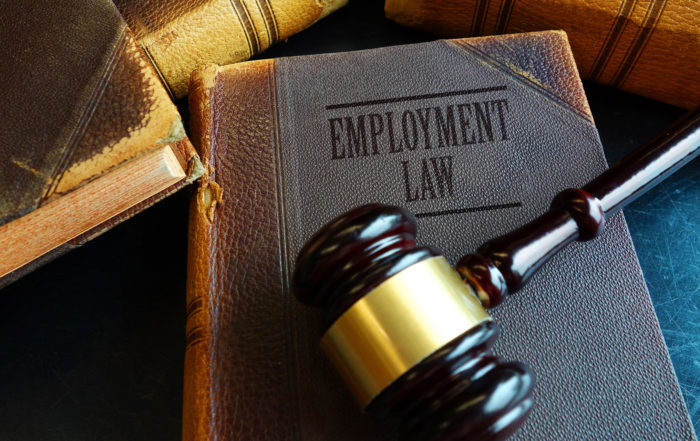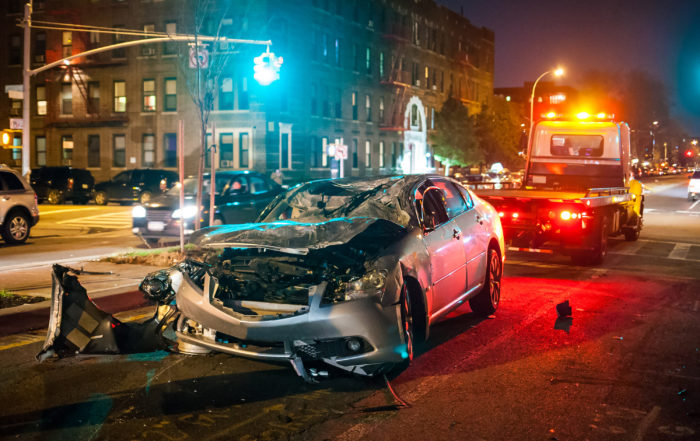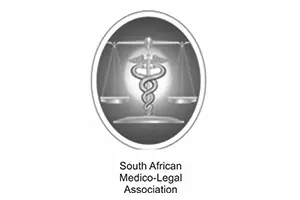General Duty of Care
1.In Minister of Safety and Security and Another v Carmichele 2004(3) SA 305 (SCA) it was held as follows ad paragraphs [43] and [44];
“[43] Did the State owe a duty to the plaintiff? The answer lies in the recognition of the general norm of accountability: the State is liable for the failure to perform the duties imposed upon it by the Constitution unless it can be shown that there is compelling reason to deviate from that norm. In Van Eeden it is suggested that such a deviation might be warranted where it would not be in the public interest to inhibit the police (and by parity of reasoning the prosecution) in the proper performance of their duty deviation was not, however, considered to be necessary in that case.
[44] Nor is there reason in this case to depart from the general principle that the State will be liable for its failure to comply with its Constitutional duty to protect the plaintiff. On the contrary, the plaintiff is pre-eminently a person who required the State’s protection. It was known by Klein, Hugo and Louw that Coetzee resided in Noetzie with his mother. Noetzie is a small hamlet with a few houses. Coetzee’s mother worked for Gösling in the house where the attack on the plaintiff occurred. She regularly visited the house. She knew Coetzee. The attack took place within four months after his release after the attack on Eurona Terblanche. The plaintiff was thus not simply a member of the public whom the State had a duty to protect. She was a member of a class of people whom the State would have foreseen as being potential victims of another attack by Coetzee. Proximity, while not an independent requirement for wrongfulness, must surely reinforce the claim that the State should be held liable for a culpable failure to comply with its duties. And foreseeability of harm is another factor to be taken into account in determining wrongfulness. The greater the foreseeability, the greater the possibility of a legal duty to prevent harm existing. This can be compared to the development in English law in relation to the tort known as misfeasance by a public officer. An element of this tort is, in our terms, dolus directus or eventualis: if a public officer knows that his unlawful conduct will probably injure another or a class of persons, the State may be liable for the consequences.
(The question of foreseeability arises also, of course, when determining negligence: but it may in appropriate cases play a role in determining whether the defendant should be held liable for failure to perform a duty.)….”
CAUSATION
2.In Carmichele supra the Court dealt with the issue of causation and held as follows at paragraphs [54] to [72]:
“[54] Causation, like negligence, was not an issue in Carmichele (SCA) and although it was considered by Carmichele (CC) paras [75] – [77], the Constitutional Court left the matter for the decision of the trial court. Chetty J came to the conclusion that there was a causal link between the negligence referred to and the plaintiff’s damages. The matter is complicated by the fact that Coetzee was released in terms of a court order and not by Hugo or Louw. This intervening fact, which might even amount to a novus actus interveniens, raises a number of difficult questions. It is not in issue, however, that but for the intervening court order a factual causal link between the negligence and the plaintiff’s damages was established. I
[55] Causation has two elements. The first is the factual issue which has to be established on a balance of probabilities by a plaintiff 48 and the answer has to be sought by using the ‘but-for’ test:
‘In order to apply this test one must make a hypothetical enquiry as to what probably would have happened but for the wrongful conduct of the defendant. This enquiry may involve the mental elimination of the wrongful conduct and the substitution of a hypothetical course of lawful conduct and the posing of the question as to whether upon such an hypothesis plaintiff’s loss would have ensued or not. If it would in any event have ensued, then the wrongful conduct was not a cause of the plaintiff’s loss; aliter, if it would not so have ensued.’
[56] To this, Van Duivenboden para [25] added:
‘There are conceptual hurdles to be crossed when reasoning along those lines for, once the conduct that actually occurred is mentally eliminated and replaced by hypothetical conduct, questions will immediately arise as to the extent to which consequential events would have been influenced by the changed circumstances. Inherent in that form of reasoning is thus considerable scope for speculation a plaintiff is not required to establish the causal link with certainty, but only to establish that the wrongful conduct was probably a cause of the loss, which calls for a sensible retrospective analysis of what would probably have occurred, based upon the evidence and what can be expected to occur in the ordinary course of human affairs rather than an exercise in metaphysics.’
[57] An intriguing aspect raised by Carmichele (CC) para [76], but left for later decision, is whether an objective or subjective test should be applied in determining causation. In the ordinary case the question does not arise, but in this case, because one has to postulate a hypothetical judgment by a judicial officer exercising a discretion, it does. An objective test would mean that the Court has to determine what a reasonable magistrate, on the probabilities, would have done. The subjective test requires the Court to establish what the relevant magistrate would have done, something that would depend on the relevant magistrate’s evidence or evidence of what he or she had done in similar cases in the past.
[58] The Court below answered the question posed by the Constitutional Court thus:
‘In its judgment, the Constitutional Court understandably favoured the objective approach. The subjective approach would necessitate the particular judicial officer having to testify on the hypothetical question of how he would have decided a particular case. That would certainly not be in the interests of the administration of justice. The objective approach eliminates that possibility. Adopting the objective approach therefore, the question is how would the reasonable court have determined the matter.’
[59] Apart from the fact that the Constitutional Court did not, as I read its judgment, favour any approach, I have difficulties in accepting the logic of the argument of the Court below. The first leg of causation, being a question of fact, cannot depend on policy considerations such as whether or not a judicial officer should be called to testify. Causation in this type of case will then no longer be a factual matter of what the effect of certain conduct on the probabilities ‘would’ have been; it would then become a value judgment of what it ‘should’ have been. Factual issues cannot be decided differently depending on the type of case. It has to be conceded, however, that it would be inappropriate for a particular judicial officer to testify in relation to the hypothetical question of how he or she would have decided a particular case. The problem becomes more complicated if, depending on the organisation of a particular court or hypothetical postponements and the like, the identity of the relevant magistrate cannot be established with any measure of confidence.
[60] The solution to the conundrum appears to be this: The inquiry is subjective in the sense that a court has to determine what the relevant magistrate on the probabilities would have done had the application for bail been opposed. In this regard the ex post facto evidence of the magistrate would generally amount to an inadmissible opinion as to what his or her state of mind would have been at some time in the past. To the extent that the evidence is admissible it would generally be unhelpful because it would be speculative.
[61] Courts of appeal are often called upon to decide what a reasonable judicial officer should have done and this they do by establishing what a reasonable judicial officer would have done. It may be presumed factually that judicial officers conform to that norm and it is fair to deduce that any particular judicial officer (even if his or her identity cannot be established), on the probabilities and as a matter of fact, would have so acted. The proper inquiry is, thus, what the relevant judicial officer, who is factually assumed to make decisions reasonably, would, on the probabilities, have done. We know from experience how few bail appeals emanate from magistrates’ courts and that a small percentage succeeds and it is thus fair to assume that magistrates on the whole tend to get bail matters right. This factual presumption has to yield in the face of cogent evidence pointing in another direction. An extreme example would be the case of the maverick magistrate.
[62] To determine causation requires that we transpose ourselves back to March 1995. The law relating to bail, at the time, was in flux (the interim Constitution had been but a year in operation) and accused persons were being released on bail because some courts were overawed by the constitutional right every accused had under s 25(2)(d) of the interim Constitution ‘to be released from detention with or without bail, unless the interests of justice require otherwise’.
[63] The Constitutional Court recognised the uncertainty of the law relating to bail at the beginning of the post-Constitutional era when it had to consider the constitutionality of the amended s 60 (which came into force after the events in this case and thus plays no role) of the Criminal Procedure Act:
‘Although the transition to the new dispensation kept the general body of South African law and the machinery of State intact, the advent of the Bill of Rights exposed all existing legal provisions, whether statutory or derived from the common law, to reappraisal in the light of the new constitutional norms heralded by that transition. The retention of the existing legal and administrative structures facilitated a reasonably smooth transition from the old order to the new. But the transition did have an effect on the country’s criminal justice system. People who had acquired specialised knowledge of the system, and had become skilled and sure-footed in its practice, were confronted with a new environment and lost their confidence. Particularly in the lower courts, where the bulk of the country’s criminal cases is decided, judicial officers, prosecutors, practitioners and investigating officers were uncertain about the effect of superimposing the norms of a rights culture on a system that had evolved under a wholly different regime; and about the effect of that superimposition in a given case. Bail was no exception. On the contrary, much of the public debate, and much of the concern in official circles about law enforcement has been directed at the granting or refusal of bail.’
Parliament thought it wise to intervene and a substantial overhaul of the provisions of the Act relating to bail were introduced later during 1995.
[64] All this was confirmed in evidence by the magistrate, Mr von Bratt, who had made the order for the release of Coetzee. He was called by the plaintiff and said that after the advent of the interim Constitution there was very much a renewed emphasis on personal freedom. The vast majority of people who had been arrested on murder charges and who had appeared before him and other magistrates at Knysna, he said, were released on bail or on their own recognisances. In exceptional cases only were people kept in custody. He gave no particulars of those instances and the generality of his evidence is in that regard of little value because as Wessels JP pointed out more than 80 years ago:
‘(W)here the personal opinions of various judges are concerned, one can always refer to cases where bail has been given and to cases where bail has not been given, and can press in the one case a judgment similar to that given in the case where no bail was granted, and in another case a judgment similar to that given where bail was allowed.’
[65] Since in deciding this issue we are trapped in a time capsule we are to imagine an ordinary bail hearing, one of maybe hundreds, before Mr von Bratt or one of the other magistrates at Knysna and we have to consider what evidence would have been placed before the court by the average prosecutor who is not negligent.
[66] A prosecutor, I believe, would have applied for a postponement of the bail application for a day or two in order to obtain particulars about the alleged previous rape conviction and a report of the medical examination of the complainant. A postponement would have been granted and on the next occasion the information would have been available. The medical report would have shown that the complainant’s injuries were not that serious and that there were limited prospects of proving rape. It would have transpired that Coetzee had no previous conviction for rape; instead there were two previous convictions about six months old: one for housebreaking and the other for indecent assault accompanied by physical force (‘fisiese geweld’). The sentence for the latter was a fine of R600 or six months’ imprisonment but, importantly, there was a suspended sentence of a further 12 months hanging over his head on this conviction. The other information contained in the docket – namely the content of the complainant’s statement and that of Coetzee’s warning statement – would likewise have been presented to the Court. It would have been established that, although fairly well educated, he was unemployed, was living with his mother (a domestic with other children) at Noetzie on a precarious basis and that he had no visible source of income.
[67] What then would Mr von Bratt have done? He was never really asked the question in relation to the relevant factors but only some questions about his approach to bail in general. There is nothing that suggests that he would have acted in some or other irrational manner. On the contrary, his answers were quite properly in general terms and amounted to this: if the facts justified it, he would not have released Coetzee.
[68] Argument about the factors that could have been taken into account during March 1995 was presented to us. Much was made of whether or not a person could have been refused bail because (as is now the case under s 60(4)(a) of the Criminal Procedure Act) there was a likelihood that the accused, if released on bail, would endanger the safety of the public or any particular person, or commit a serious offence. The Constitutional Court, I might mention, has held that this was a legitimate objective of bail recognised at common law. Whether we are bound by this finding – the argument assumed that we are not – I do not know, but in any event I am not sure whether magistrates in 1995 would have appreciated that such a factor could have been taken into account.
[69] In my judgment the matter should be decided without legal niceties. Judicial officers, in dealing with run of the mill bail applications, take an overall and broad view of the matter. They always have taken into account the seriousness of the offence, the probabilities of a conviction, the nature of the probable sentence, and the ability to put up bail. All these factors go to the likelihood whether the accused will stand trial, the main consideration in deciding the bail issue.
[70] In this case the offences were serious. The complainant was told that she would be killed, she was throttled and she was left for dead. Coetzee ran away, believing that he had killed her. There was at least a serious attempt to rape her. The likelihood of a conviction was overwhelming if regard is had to the fact that Coetzee directly after the event confessed to having committed a ‘murder’ and that in his warning statement he accepted that he may have raped the complainant. A lengthy sentence of imprisonment was a foregone conclusion especially since Coetzee was not a first offender. In addition, it was highly likely that his suspended sentence would have been put into operation. Bail he could not afford. The only real factor in favour of Coetzee was that he had confessed to the crime and gave himself up to the police, but it must be remembered that he was at the time under the influence of liquor.
[71] I am satisfied that Mr von Bratt, more probably than not, would have refused bail in these circumstances. At best for the appellants he might have granted bail but then he would have fixed bail at a substantial amount which Coetzee or his family would not have been able to afford. Release Coetzee with a warning he would not have done. Factual causation has accordingly been established.
[72] Then to legal causation, namely whether ‘the wrongful act is linked sufficiently closely or directly to the loss for legal liability to ensue or whether, as it is said, the loss is too remote. This is basically a juridical problem in the solution of which considerations of policy may play a part.’ The Court below, without adumbrating, held that the plaintiff’s loss was not too remote. Since appellants do not attack that finding, more need not be said about the issue.….”
3.In Cape Metropolitan Council v Graham 2001(1) SA 1197 (SCA) the Court held as follows at paragraphs [6] and [7]:
“[6] The appellant admitted in its plea that it was under a legal duty to take such reasonable precautions as circumstances permitted in order to avoid or minimise injury to users of the road. In other words, it effectively acknowledged that if it were found to have negligently failed to take such precautions its conduct would have been not only negligent but also wrongful. (Compare Sea Harvest Corporation (Pty) Ltd and Another v Duncan Dock Cold Storage (Pty) Ltd and Another 2000 (1) SA 827 (SCA) at 837G – 838C.) In my view, the admission was properly made. Given the circumstances, the existence of such a duty accords with what I would perceive to be ‘the legal convictions of the community’ (see Cape Town Municipality v Bakkerud 2000 (3) SA 1049 (SCA) at 1056F – G). In view of the admission, however, it is unnecessary to consider this aspect further.[7] Turning to the question of negligence, it is now well established that whether in any particular case the precautions taken to guard against foreseeable harm can be regarded as reasonable or not depends on a consideration of all the relevant circumstances and involves a value judgment which is to be made by balancing various competing considerations. These would ordinarily be
‘(a) the degree or extent of the risk created by the actor’s conduct; (b) the gravity of the possible consequences if the risk of harm materialises; (c) the utility of the actor’s conduct; and (d) the burden of eliminating the risk of harm’.
(See Ngubane v South African Transport Services 1991 (1) SA 756 (A) at 776H – J, where J C van der Walt in Joubert (ed) The Law of South Africa vol 8 para 43 is quoted with approval; Pretoria City Council v De Jager 1997 (2) SA 46 (A) at 55H – 56C.) If a reasonable person in the position of the defendant would have done no more than was actually done, there is, of course, no negligence.…”
The current position on objections to the con/arb process
Con/arb process - The Commission for Conciliation, Mediation[...]
Out of time? Think again – The CCMA and its rules
By Lara Keil (Candidate Legal Practitioner) under the[...]
RAF’s lodgement requirements: Claimants further prejudiced
By Lara Keil (Candidate Legal Practitioner) under[...]














